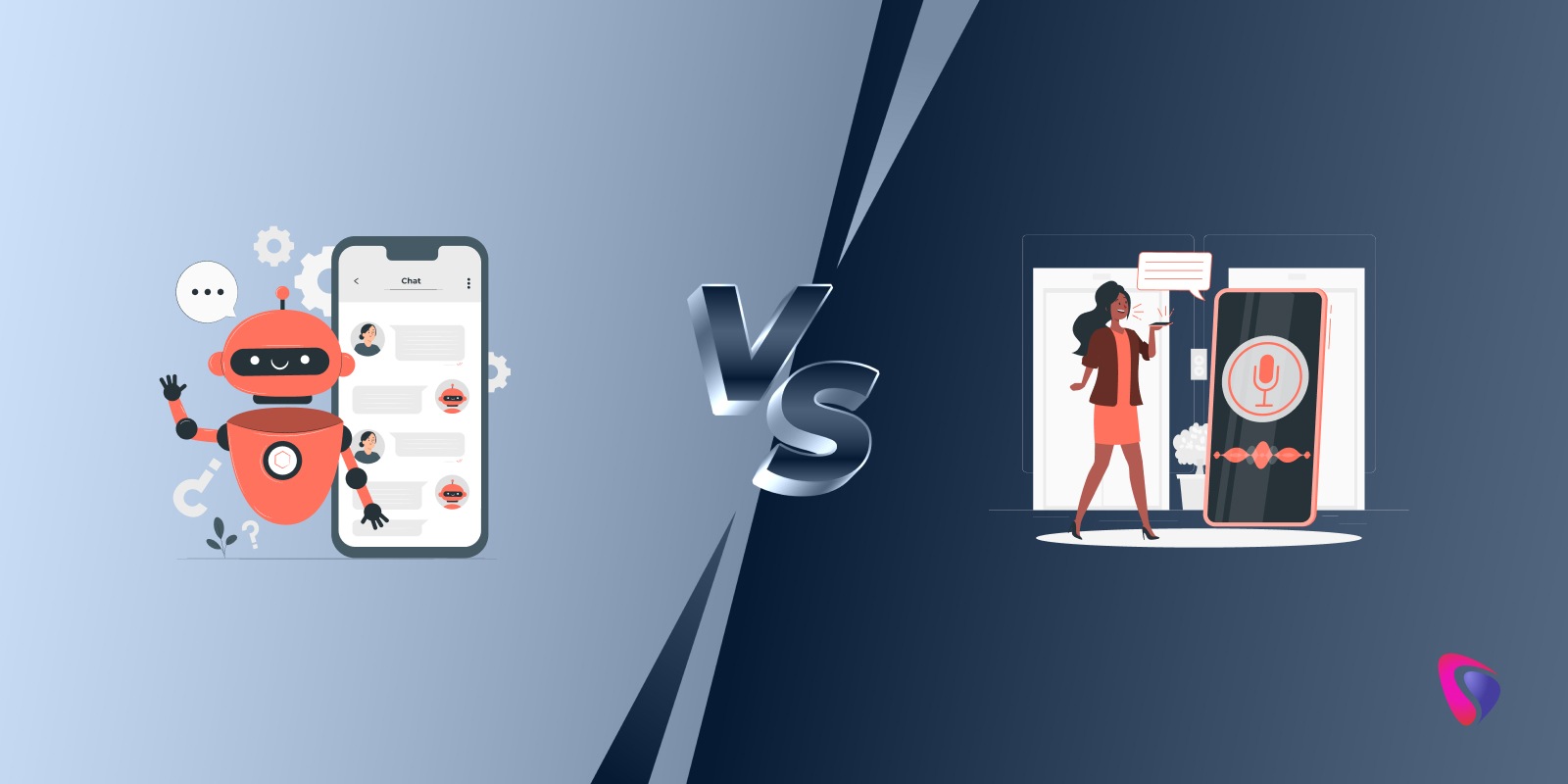
Introduction
A few years back, if you think, smartphones or even touch-screen phones were just an idea being developed in the factories, with modern concepts just being brainstormed. As time progressed, smartphones started becoming visible in every other individual's hands. In 2025, smartphone penetration has reached its peak capacity and has become indispensable in our daily lives. Whether it's basic communication, entertainment, or work, smartphones are practically everywhere. But what makes these devices so versatile? The answer is their incredible software, aka the operating system (OS). Primarily, the smartphone OS is the core software that monitors each and every function of your device.
From making a phone to sending to texting to running apps and accessing the internet, the smartphone's operating system (OS) manages everything just like the brain of the device. It allocates hardware and software resources equitably for delivering a seamless user experience. Your OS serves as the mediator between the user and the device's hardware, streamlining overall interaction and dictating the user interface's performance to ensure optimal smartphone functionality. Likewise, the operating system can be considered the concierge of app compatibility, exerting the dominion to determine which apps work on your phone and which don't. It helps in authenticating the framework within which third-party developers design and optimize their software to confirm a more cohesive ecosystem that improves upon the user's preference to customize their device with a bunch of apps.
But have you ever wondered how many operating systems are there for smartphones, and is there any difference? In this article, we're going to check some of the most popular smartphone operating systems, along with some of the lesser-known ones, along with their unique features. Let's dive into the diverse landscape of smartphone operating systems, highlighting the top players and the lesser-known ones who are shaping the mobile experience for global users.
What Is a Smartphone Operating System?
A mobile or smartphone operating system is basically the software platform that allows the individual to interact between the device’s hardware and software on the mobile, tablets, smartwatches, etc. It proffers your device the proper user interface, assures security, promotes app creation using Software creation Kits, and manages resources. The common smartphone operating system helps govern the overall operation of the device, the user's interaction experience, and the app ecosystem. Moreover, they combine computer operating systems with mobile-specific characteristics. Also, they are rather light and simple. An operating system (OS) is an executable program that functions as a link between the system hardware and the user who uses it. Furthermore, it manages every communication between software and hardware.
Features of Phone Operating Systems
Whether you're looking for Android app development, iOS app development, or even iPhone app development, there are certain features of smartphone operating systems that you should be aware of. Let's have a look:
User-Friendly Design
Regardless of the operating system, an intuitive design that's easy to use is primal for any device's smooth interaction. Intuitive, aka responsive interfaces, explicit navigation, and smoothly accessible options all contribute to a sumptuous user experience that is equally appealing to both rookies and experienced users.
Picking an Efficient App Store
Choosing a better-performing app store is essential for users to explore a broad spectrum of applications. It should be equipped with a variety of high-quality apps to enhance user functionality and entertainment options, reliable security measures, and a user-friendly interface.
Effective Interaction
Streamlined communication demands abilities such as texting, calling, and video conferencing, especially when it comes to a smartphone operating system. Having a well-integrated communication system empowers individuals to maintain effortless connectivity, allowing successfully efficient digital interactions.
Personalization
Users love the option to customize their devices. Primary customization tools, such as different presets and settings, placement of widgets, and theme changes allow users to tailor their experience to their preferences and requirements.
Personal Information Management
Having proper personal information management features is vital. This is inclusive of secure cloud services, uncomplicated options for controlling and protecting personal data, secure cloud services, and excellent data encryption that helps in confirming user privacy and security.
Pace and Power
Focusing on speed and efficiency in operating systems is primal regardless of device specifications. Ensuring a primitively positive user experience can be made possible via rapid responsiveness, good resource management, and smooth performance.
What Are the Components of a Mobile Operating System?
It's important to remember that a mobile operating system (OS) is a pretty sophisticated software platform that manages a device's software as well as hardware components whilst rendering a user-friendly interface. These are some of the most important components of any mobile operating system:
1- Kernel
The kernel is termed the crux or the foundation of the mobile operating system. It serves as the primal link between hardware and software. Kernel helps in managing the memory, CPU, and device drivers. It's vital to guarantee that all the hardware components, such as the sensors, cameras, and touchscreen functionalities interact proactively with software. Kernel helps you manage low-level duties like power management and process scheduling. Case in point, for Android app development, a customized Linux kernel is the best point of commencing.
2. User Interface (UI)
Users interact with the user interface, which includes the OS's design and layout. Primary graphical features functionalities include push alerts, menus, and icons. While navigations comprise physical buttons, voice instructions, and touch gestures. The OS also ensures that the user experience (UX) is both intuitive and accessible. For instance, you've noticed that the operating system for smartphones iOS is loved and revered for its elegant and simple design, but Android boasts more layout customizations.
3. Application Framework
Having an optimal application framework renders APIs (Application Programming Interfaces) and tools that developers for hire utilize to create apps. Major elements include network connectivity, data storage, and libraries for UI design. This component enables apps access to hardware capabilities such as Bluetooth, camera, and GPS. Hence, curating a uniform environment for app execution. For instance, the Android application framework comprises libraries such as Activity Manager and Content Providers for smoother interaction flow management.
4. Application Layer
The application layers comprise both pre-installed and third-party apps that users interact with. This enables the facilitation of important or rather primary tasks such as calling, messaging, browsing, and multimedia playing. The layers also allow people to install any additional apps they might need from app stores such as Google Play and Apple App Store. It helps in optimizing the support for background tasks, alerts, and app integration.
5. Middleware
The middleware's task is to function as a mediator between the OS kernel and applications. It also controls the data sharing between applications and system services while managing activities such as database administration, authentication, and multimedia processing. Middleware helps in redeeming an outlet for safe and efficient app communication.
6. Device Drivers
Device drivers are basically components of the software that enable the OS to communicate with the hardware. Its core functionalities comprise managing individual hardware components like storage, displays, cameras, and audio systems. These components also convert high-level OS commands into hardware-specific instructions. Some real-world examples include accelerometer and gyroscope drivers, that authorize apps to determine device orientation.
7. Security and Permissions Management
Having proper features in place for security will help defend the system from prominent risks such as malware and illegal access. The core functionality of this is to control app permissions to access sensitive data and hardware. From regular upgradation of security patches to fix vulnerabilities, it also supports encryption, biometric authentication, and secure boot processes. Let's take a real-world example from the world of Android app development, where Android engages in sandboxing to segregate programs, but iOS has impenetrable app approval processes.
8. Networking
The networking element delivers connectivity for communication and data transmission. Its core functionality is about managing NFC, Wi-Fi, cellular networks, and Bluetooth. This also provides help with data sharing, internet connectivity, and cloud synchronization. Furthermore, it optimizes network utilization to diminish power consumption and increase performance.
9. Power Management
Power management's main functionality is to enable more efficient working of the device's battery. Its primary job is to monitor the background app's activities, adjust the screen brightness, and manage CPU utilization. Power management helps in increasing the battery life by improving app and hardware performance. Users and developers can also use it to view battery usage statistics.
10. File System
The file system in an operating system for smartphones helps in organizing and storing data on the device. Its core functionalities include the deletion of files and directories, new folder creation, and modification of existing or uploaded files. File system helps in efficient data retrieval and storage along with supporting secure storage for sensitive information.
11. Multitasking and Process Management
The multitasking and process management component fosters seamless operation of many apps and processes. Its primary functions include the management of active, background, and suspended jobs. Apart from allowing capabilities such as split-screen multitasking, it also allocates CPU and memory resources to bypass any kind of system crashes and slowdowns.
12. Sensors and Hardware Abstraction Layer (HAL)
The Hardware Abstraction Layer (HAL) works as an interlink between the operating system and device-specific hardware. Its primary functionality includes the management of proximity sensors, GPS, accelerometer, and gyroscope. Sensors and HAL deliver a standardized interface for applications to access hardware functionality. For instance, the Hardware Abstraction Layer (HAL) ensures that an app can monitor its location via GPS, independent of the device classification.
13. Updates and Maintenance
The common smartphone operating system presents approaches for updating and maintenance. Its core function is to provide OTA updates for features, performance, and security. This also eliminates any kind of unnecessary files and improves storage capabilities while monitoring the system's health and handling software conflicts.
Types of Phone Operating Systems
While many smartphones look similar, they run on different operating systems (OS). These OSes are the software that controls the phone's functions, from making calls to running apps.
1- ANDROID
Holding a global market share of a whopping 70%, Android is one of the most widely used smartphone OS globally. Developed by the tech giant Google, it's viable for its open-source nature enables incredible customization, and delivers a broad variation of unique features across multiple devices from diverse manufacturers like Samsung, Oppo, Vivo Google Pixel, OnePlus, and many more. But why is Android called an open system? Android is considered an open system because its primary source code is made unrestricted to the public and can be revised. This enables developers to assemble their versions of the Android operating system (OS) for additional devices. If you hire app developers in India, the first thing they'll tell you is that the Android OS is the most common smartphone operating system and is loved due to its many free capabilities. The Android OS is completely based on the Linux kernel. Android names all of their version updates on sweet confectionaries or desserts like for instance, Cupcake, Donut, Eclair, Oreo, and KitKat. Being the most popular smartphone operating system, its agility, extensive app ecosystem, and open-source nature enable it to support a broad variety of devices across price points and brands.
Core Features
- Customizable user interface
- Google Play Store with over 3 million apps
- Seamless compatibility with multiple hardware manufacturers
- Regular updates and security patches
2- iOS
Originally developed for iPhone devices, Apple’s iPhone OS is the most loved operating system for smartphones with a global market share of 28%. iOS is curated exclusively for Apple-owned devices such as the iPhone, iPad, iWatch, iPod, Mac Book, and iMac. Boasting a sleek design, immaculate security, a buttery smooth interface, and seamless integration with Apple’s ecosystem, iOS offers the most premium user experience. Its App Store hosts a vast ecosystem of apps that are reliable and sophisticated which again becomes when you hire iOS app developers. iOS promotes consistency of production in updates and exclusive features, resulting in a very dedicated user base. Users seeking a polished, user-centric mobile experience consider iOS a top choice. The iOS mobile operating system can be utilized exclusively on the devices manufactured by Apple since the brand doesn't license the OS for third-party hardware. Apple's operating system, Mac OS X, provides the foundation for iOS.
Core Features
- Exclusive App Store with high-quality and handpicked applications
- Ongoing updates for all supported devices
- Superior privacy and security features
- Seamless interaction with macOS, watchOS, and iPadOS
3- Windows
Crafted by the tech giants, Microsoft, Windows Mobile is their in-house mobile operating system meant for smartphones and mobile devices with or without touchscreens. This OS was primarily Microsoft's attempt to enter the smartphone market. Launched in 2010, alongside the Windows Phone, this new smartphone platform featured all the capabilities of the computer-based Windows operating system, as well as extra mobile phone functions. This OS is based on the Windows CE 5.2 kernel and is used to possess a distinct tile-based UI and easy connectivity with Microsoft services. However, it could not acquire traction owing to restricted app support and was abandoned in 2017.
Core Features
- Seamless integration with Microsoft services and devices.
- Unique user interface with interactive tiles for quick information access
- Incorporated features like Microsoft Office integration for productivity
4- HarmonyOS
Developed by aficionados of the tech world, Huawei is a modern-day OS that caters to a wide range of devices such as IoT wearables, smartphones, and smart TVs. Emphasizing a seamless and cohesive user experience across different devices, Huawei is loved by global smartphone users for its smoother transitions and interactions. Currently, they are focusing on high-level functionality for IoT devices and are designing it to work on a wide range of devices, including tablets and smart home appliances. Huawei boasts robust user privacy and security features and is presently building on expanding its app ecosystem with augmenting support from developers.
Core Features
- Dispersed OS for cross-device functionality
- Compatibility with Android apps
- Prioritizes performance and privacy
5- KaiOS
KaiOS is a weightless operating system based on the Firefox OS open-source project. Designed for feature-based phones with keypads or keyboards, it was devised with the intention of bridging the gap between traditional and smart devices. Recently, it has been incorporated into more affordable phones like the JioPhone, predominantly in emerging markets. With in-built Google Assistant, it also supports modern connectivity technologies such as 4G LTE, VoLTE, GPS, and Wi-Fi. KaiOS entails apps present at their KaiStore app marketplace that are mainly HTML5-based. It also supports over-the-air updates, meaning goodbye to computer connecting woes. KaiOS has an optimized user interface that helps it attain more user-friendly usage and longer battery life. It's been developed by KaiOS Technologies (Hong Kong) Limited, and TCL Corporation, a Chinese electronics conglomerate, is its biggest shareholder.
Core Features
- Supports digital inclusion and closes the digital divide
- Devised for entry-level smartphones with limited resources
- Lightweight, fast, and affordable for emerging markets
- Support for essential apps like WhatsApp and YouTube
6- Bada
Bada is derived from the Korean word bada, which means "ocean" or "sea.". Launched way back in 2010, Bada was a proprietary mobile operating system launched by the tech giant Samsung. The first smartphone that possessed this mobile operating system was the Samsung Wave. Bada offers mobile capabilities including multipoint touch, 3D graphics, multipoint touch, and, of course, program downloads and installations. Unfortunately, Samsung discontinued the production of its latest Bada smartphones in 2012 in acceptance of Android. Bada had been developed in order to contend with Android and supplant Samsung's feature phone ecosystem. Bada has been designed to be developer-friendly, particularly for programs that use online services.
Core Features
- Proffered customization options
- Bada had an app store
- Supported multimedia formats like Flash
- Bada also supports sensors
7- Palm OS (Garnet OS)
Launched way back in 1996 on the Pilot 1000 handheld, the Palm OS is a proprietary mobile operating system (PDA operating system) that was designed specifically for mobile devices. Developed by PalmSource Inc., it was heavily utilized during the period of the late 20th and early 21st centuries. Palm OS is also known as Garnet OS. Palm OS was capable of supporting Palm Pilot (the first Palm OS device), GPS devices, barcode readers, handheld gaming consoles, and Palm Tungsten. As time passed, many newer versions of the Palm OS were upgraded to support extension ports, new processors, external memory cards, enhanced security, and ARM processors and smartphones. Palm OS 5 has been modernized to accommodate an extensive variety of screen resolutions, wireless connectivity, and increased multimedia features. It's designed for a single user to perform one task at a time, react fast to user input, and last longer on a few batteries, infused with Graffiti 2 (handwriting recognition input system) and HotSync technology. Lastly, it offers device locking with passwords along with connectivity to a variety of networks using TCP/IP, Wi-Fi, Bluetooth, infrared, serial port, and USB.
Core Features
- Intuitive and painless interface
- Known for their innovative features
- Supported many networks and devices
8- LineageOS
Officially launched in 2016, LineageOS was originally forked from CyanogenMod. It is an open-source operating system that is presently driven by the community (based on Android) and is meant to be deployed for Android-powered phones and tablets. LineageOS has been a popular choice among computer aficionados who want more control over their gadgets. It is available on smartphones, tablets, and set-top boxes. LineageOS, which is accessible on GitHub, aims to improve the usefulness and longevity of mobile devices, integrates open-source software, offers Unix command-line utilities for power users, and is maintained by the LineageOS open-source community. It also possesses advanced tools and debugging capabilities for Android developers, making it a preferred choice for many engineers.
Core Features
- Customizable and bloatware-free
- Recurring security updates
- Focus on privacy and user control
9- Symbian OS
This is again one of the popular operating systems for smartphones and keypad-based devices that pretty much dominated the 2000s decade. Developed by Symbian Ltd. (a huge consortium of mobile phone developers such as Motorola, Sony Ericsson, and Nokia). Nokia was one of the early corporations to use this OS on its mobile phones. Based on Java language, it delivered high-level integration with communication for smartphones and other handheld devices. Symbian OS was implemented in many major mobile phone brands like Samsung, Motorola, Mitsubishi, Nokia, Fujitsu, and Sharp and soon became a trailblazer in the smartphone industry. Originally developed as a proprietary software OS, its roots originate from Psion's EPOC32 operating system. However, as time passed Symbian OS couldn't keep up with the advancements that came with iOS and Android and was later replaced for being outdated and inefficient in comparison to market players. It amalgamates middleware with wireless communications via an integrated mailbox and the integration of Java and PIM functionality (agenda and contacts).
Core Features
- Earliest successful mobile operating systems
- Powered by many Nokia devices
- Customizable interface for all
10- webOS (Palm/HP)
Originally developed by Palm, Inc., then acquired by HP, and currently owned by LG, webOS is a very popular mobile operating system functioning on the Linux Kernel. It is mainly used for smart devices like phones, and smart TVs. Using a graphical user interface (GUI) it allows users to conveniently control all their devices and further access all of their advanced features. Written in C++ and Qt, its multitasking feature enables a lot of usage among people of all generations. When HP acquired webOS from Palm, they deemed it open source, and was later modified better by LG to enable users to stream content, access apps, and control connected devices. WebOS could double as a platform for smart signs, allowing businesses to control information and improve user experience. With the introduction of webOS 3.x, it expanded its webOS within the enterprise mobile market by emphasizing safety and administration capabilities.
Core Features
- Hold cross-platform compatibility across smart TVs and other devices
- Simple, intuitive, and minimalist user interface
- Utilizes uncomplicated navigation gestures
Conclusion
The above-mentioned top operating system for smartphones listed above showcases dynamic and ever-changing solutions whose applications have left a global impact for generations. These smartphone advancements won't just influence the future of technology but also reshape many sectors and areas of our daily lives. If you're a budding entrepreneur or an established enterprise looking to hire dedicated developers, for your Android app development, iPhone app development, and iOS app development, consider approaching a top app development company to capitalize on this. If you wish to get top-tier services using the best operating systems, connect with Hyperlink InfoSystem, a reputed mobile app development company, with immaculate solutions provided for over a decade.
Hyperlink InfoSystem is a well-known global corporation that provides IT solutions across all disciplines. Since its humble beginnings in 2011, its technological focus has expanded to cover web development, mobile app development, commercial software solutions, and, most recently, artificial intelligence (AI). With over 1200 employees and a global presence in the United States, United Kingdom, UAE, France, India, and Canada, Hyperlink InfoSystem is dedicated to assisting organizations in using the potential of technology to achieve their goals. Connect with us today to know what we can do for you.
FAQs
Q- How to choose the right operating system for your app?
Ans- Whenever you’re choosing a smartphone, remember that your operating system is the brains behind everything you see, use, and hear. Consider the following factors before making your choice:
- App Ecosystem: iOS and Android offer the widest range of apps and are upgraded on a constant basis while also rendering paid/unpaid app purchase options.
- Budget: KaiOS is perfectly suitable for low-cost feature phones, for example, Jio Phones
- Customization: Android-based OS like LineageOS is ideal for users seeking flexibility and performing different functions over time.
- Privacy: If you’re a user who values privacy more, consider choosing platforms like iOS and Sailfish OS, that heavily prioritize user privacy.
Q- What are the features of a mobile operating system?
Ans- The primary features of a mobile operating system are:
- Intuitive interface and is easy to use for people of all ages
- Selecting an optimal app store
- Picking the one with good battery life
- Superior data storage, management, and organization
Q- Why is Android called an open system?
Ans- Android is known as an open system since it is created using open-source code. This implies that the source code is openly available to manufacturers, who can change and personalize it for their own devices as per the market demands, hence, proving its immaculate agility. The open nature of Android encourages boundless innovation and versatility in the smartphone industry.
Q- What is a mobile OS?
Ans- An operating system for smartphones basically enables users to execute a broad variety of application software on their phones, tablets, and other devices like IoT wearables and smart TVs. Furthermore, they also combine computer operating systems with mobile-specific characteristics. Furthermore, they are rather light and simple, which makes them a widely used solution in 2025.
Q- What is the most common smartphone operating system in the world?
Ans- The most common smartphone operating system in the world is without a doubt- Android. Developed and maintained by the tech giant, Google, Android is an open-system mobile OS that's been utilized by major mobile companies globally. Brands like Samsung, RedMI, Xiaomi, OnePlus, Google Pixel, Motorola, Oppo, Vivo, RealMe, iQOO, and Lava employ Android for all their core design and functionalities. Boasting an open-source nature, extensive customization options, pricing affordability, and widespread adoption by global companies contribute to its supreme dominance in the smartphone market.



















